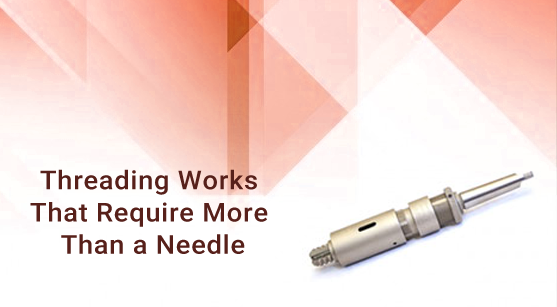Recessing or necking operations are often required to be performed on work piece shoulders to ensure the correct fit for complimentary parts. A groove is usually fabricated to permit the nut to pass through completely whenever a thread is required to run the full length. Prior to cylindrical grinding work, the grooving is carried out on the work piece to allow the complete grinding of the work piece without coming into contact with the shoulder.
Different machines and industries require different types of grooving works, and they are carried out using different types of techniques and grooving tools. It is an integral part in the manufacture of most modern equipment that is used in our day-to-day lives.
Internal Grooving
This is a highly sensitive job and requires precision. Internal grooving when performed on parts with a small diameter, there is a high risk of the chips getting jammed and can result in the breakage of tools. Removing broken chips is an arduous task. The other major risk factor is vibration. The correct size of a tool used for these jobs is critical. For internal grooving, the tools yield best results when ground to the measurements and shape necessary for a particular job. The corners of these tools are rounded off to minimise the chances of cracking, especially if they are going to be heat-treated.
Face Grooving
In face grooving jobs, the tools are used centrally and not in a spiral manner. The tool used will have a curved blade, as it must be compatible to the curve of the groove. To ensure that both the insert and the tool holder fit into the rut, the inner as well as the outer diameters of the groove have to be taken into consideration.
Parting Operations
The tool for parting operations is fed from the outside of the work piece and goes towards the centre while the cutting speed is reduced. In any parting operation, the stability is a crucial element. Since both sides of the insert have material, the tools used are narrow and the length of the tool holder is directly proportional to the diameter of the work piece.
Successful Grooving Operations
For any successful grooving operation, it is important that the tools be employed in the correct manner. Some of the factors to bear in mind are:
- Power: It is essential that the right power is used for the tool to run at the correct speed.
- Alignment: Incorrect machine alignment is another factor, which could lead to damage of the machinery as well as work piece. Also, if not properly aligned, the shape and size of the groove may not be correct.
Choosing the right tool
The selection of the right tools and their correct application will ensure the cost effectiveness in any grooving operation. Understanding the properties of the materials, like ductility, tensile strength and how they respond to tools, will help in making the right selection. Different materials have different characteristics and they have to be taken into account before any grooving operation. Incorrect tools and their usage could waste important resources.














Be First to Comment